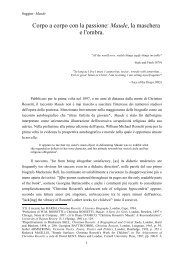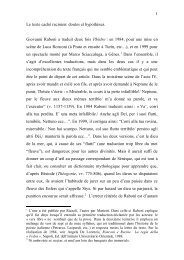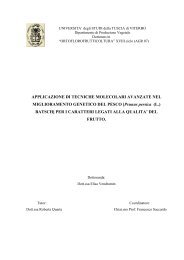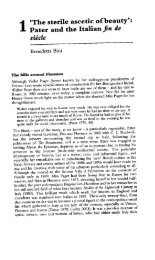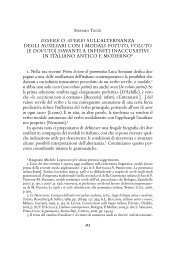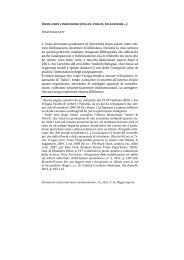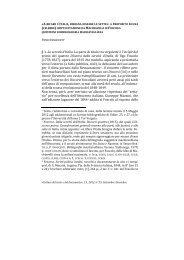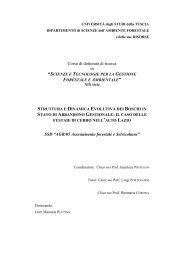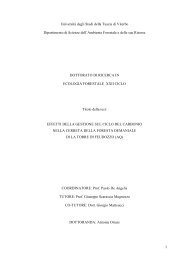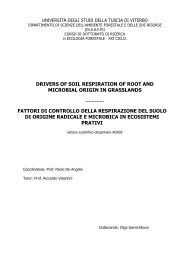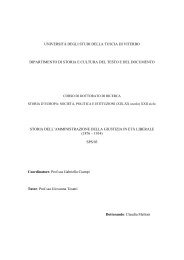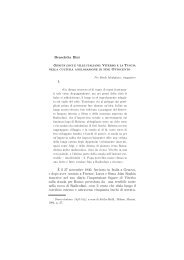1 universita' degli studi della tuscia “viterbo” - Unitus DSpace
1 universita' degli studi della tuscia “viterbo” - Unitus DSpace
1 universita' degli studi della tuscia “viterbo” - Unitus DSpace
You also want an ePaper? Increase the reach of your titles
YUMPU automatically turns print PDFs into web optimized ePapers that Google loves.
Dall’analisi dei registri di prestito di una Suscription Library nata a<br />
Bristol nel 1772, è possibile avere un’idea abbastanza chiara di quali fossero i<br />
testi più ricercati da coloro che si rivolgevano a queste istituzioni pubbliche:<br />
The largest and most popular sections of the Library were History, Antiquities and<br />
Geography, with 283 titles and 6.121 borrowings […] The most popular single work was<br />
John Hawkesworth’s Account of Voyages…in the Southern Hemisphere [3 vols.], which was<br />
borrowed on 201 occasions. Next in order came Patrick Brydone’s Tour through Sicily and<br />
Malta, Lord Chesterfield’s Letters to his Son, David Hume’s History of England, Oliver<br />
Goldsmith’s History of the Earth, Guillaume Raynal’s History of the Settlements and Trade<br />
of the Europeans in the East and West Indies 127 .<br />
Risulta pertanto evidente, da queste letture, come gli interessi geografici<br />
e storici <strong>della</strong> emergente classe borghese che si affacciava al panorama<br />
europeo e mondiale con un rinnovato spirito colonizzatore, portassero in tutto<br />
il continente ad una incredibile diffusione <strong>della</strong> letteratura odeporica.<br />
Nati per iniziativa di singoli esponenti <strong>della</strong> classe borghese, «all these<br />
were gentlemen’s libraries, supported by the middle class of merchants, manufacturers,<br />
and professional men [and their wives]» 128 , come il Vieusseux in<br />
Italia, questi luoghi ebbero un ruolo importante anche nella promozione dei<br />
principi liberali e democratici che andavano acquistando sempre più forza<br />
nell’Europa del ‘700 e ‘800. La stessa morfologia che caratterizzava gli ambienti<br />
di questi gabinetti letterari come luoghi aperti in cui gli abbonati potevano<br />
circolare liberamente per le stanze servendosi direttamente dei libri riposti<br />
sugli scaffali, denota un’idea estremamente democratica e liberale da parte<br />
dei loro fondatori, fortemente inclini a considerare la cultura come diritto di<br />
tutti e contrari all’immagine dei luoghi culturali come spazi chiusi ed elitari.<br />
In un avviso pubblicitario del 1781, viene celebrato lo spirito democratico a-<br />
127 Ivi, p. 133<br />
128 Ivi, p. 127<br />
65




